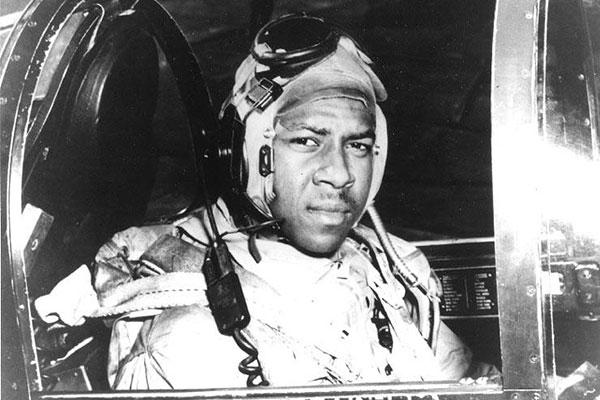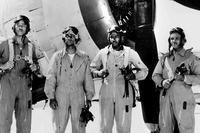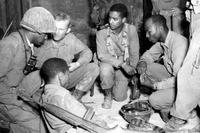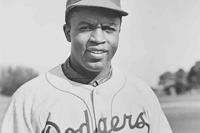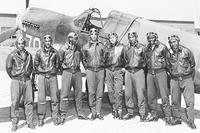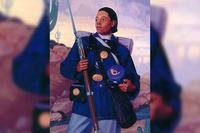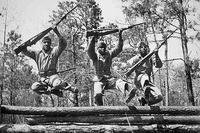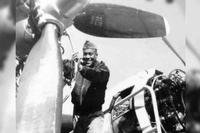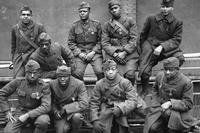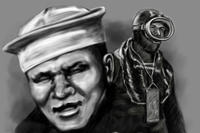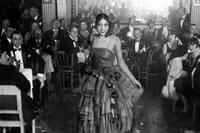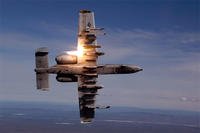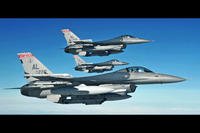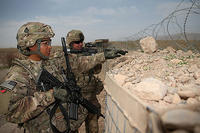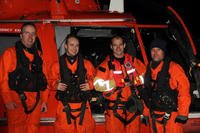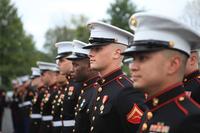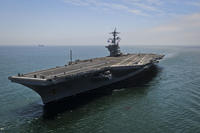The Korean War has long been known as the Forgotten War, sandwiched between two of the most heavily chronicled conflicts in U.S. history. But one of its most heroic moments was later immortalized in writing and film.
It all began on Dec. 4, 1950, when Navy pilot Jesse Brown was shot down over North Korea.
In a violent crash, his Corsair fighter came to rest on a snowy mountainside behind enemy lines. The impact snapped the nose of his plane, pinning the ensign within the wreckage. Smoke appeared, the telltale sign of a fire. It was about 3 p.m., during one of the coldest winters on record.
Ten minutes earlier, Brown had been flying close air support to try to save U.S. soldiers and Marines who were surrounded at the Chosin Reservoir, outnumbered 10 to one. That’s when a lucky shot from a Chinese Communist soldier hit his oil tank.
Now, trapped in his plane, Brown seemed destined to die alone, far from home. So he did the only thing he could: he looked to the sky and waved.
Circling overhead in a flight of Corsairs, Lt. Tom Hudner was tracking Brown’s plight.
The two were wingmen in Fighter Squadron 32 and friends, though they hailed from different worlds. Hudner was a white New Englander from the country club scene. Brown was a Mississippi sharecropper who became the Navy’s first black carrier pilot. At a time when the United States was still divided by segregation, the two were a model of brothers in arms.
Hudner eyed the trickling gray plume of smoke with horror. A rescue helicopter would never make it in time, so he cued the radio.
“I’m going in,” he announced.
Silence. The other pilots either didn’t understand what Hudner was thinking, or they didn’t want to encourage him. Their commander had laid down the law: Any man who damaged his plane unnecessarily would face a court-martial.
But this wasn’t just a pilot in distress or a faceless shipmate. It was Brown – his friend, a married man and the father of a 2-year-old girl.
Hudner cranked back the canopy, set the throttle and steered for Brown’s crash site. What he was about to do had never been tried before and has never been repeated since. He was going to make a carrier landing on a mountainside.
Brown must have heard the navy-blue Corsair come screeching to earth, its belly skidding against the rocks. He must have seen it plowing through the snow, its propellers bent back. He must have seen it lurch to a stop with a blast of powder. Even if he didn’t see the number 205 on the nose, he knew who had come to save him. Above, an awed pilot spoke for everyone when he muttered, “It would be Tom.”
“My God, it worked,” Hudner thought as he slid off the wing, bound for his friend in a race against time. He found him shivering, obviously suffering from internal injuries.
Brown greeted Hudner with glassy eyes. “We’ve got to figure a way of getting out of here,” he said.
Hudner tried to pull him from the wreck once, twice, but without result. His leg wouldn’t budge; he was helplessly pinned. Yet Brown remained calm, an inspiration to Hudner.
Hudner moved to the nose of the plane, got on his hands and knees, and doused the fire by shoveling snow on it. Then he returned to the cockpit, took the scarf from around his neck and used it to wrap Brown’s frozen hands. There was nothing more to do.
Side by side, the men waited for rescue.
As darkness stretched across the mountainside, the temperature plummeted. They watched as their squadron mates departed for their carrier, one by one, until the men on the ground were alone.
Brown was fading from his wounds, his eyelids becoming heavy. This can’t be happening, Hudner thought. Brown’s chin slumped to his chest but Hudner shook him awake. That’s when Brown gave a final message to deliver to his wife: “Just tell Daisy how much I love her.”
By the time the rescue helicopter flared onto the scene, Brown was gone.
Exhausted and defeated, Hudner headed for the helicopter. But he couldn’t leave without a word. He turned and shouted to his departed friend, “We’ll be back for you.”
As the helicopter whisked Hudner to safety, he rode in silence. Not only had he lost a friend, but Brown had become first black U.S. naval officer to die in the war. Hudner was certain he had failed.
When he stepped onto the deck of his carrier, USS Leyte, an officer approached him with a summons to the bridge. In the shadow of Capt. T.U. Sisson, he braced for punishment. Instead, Sisson shook his hand and welcomed him back.
In a press release already wired from the ship, Sisson had praised Hudner’s attempt, saying, “There has been no finer act of unselfish heroism in military history.” The squadron leader concurred; there would be no court-martial.
Upon his return home, Hudner discovered that his courageous actions had inspired the nation. In April 1951, President Harry Truman awarded him the Medal of Honor, and Hudner used his fame to personally put Brown’s widow through college.
Over the decades, closure eluded Hudner. Brown’s remains were never repatriated, and Hudner was unable to keep his promise to return for his friend. But in the summer of 2013, at 89, Hudner decided to attempt the impossible one last time. Against all advice, he traveled to North Korea, where he met with a senior colonel of the North Korean People’s Army. With the cameras of global media rolling, Hudner asked his former enemies to help search for Brown’s remains.
At first, the colonel was silent. Then he glanced at his notes, cleared his voice and began to read a prewritten reply from the nation’s new 30-year-old supreme leader, Kim Jong-un.
Kim said he was impressed that Hudner had come so far, after so long, to keep a promise to a friend. He granted approval for his army to resume the search for the remains of missing U.S. servicemen, beginning with Jesse Brown.
Hudner died at his home in Massachusetts in 2017 at the age of 93. The following year, the USS Thomas Hudner (DDG116) was commissioned in Boston on December 1, 2018, in his honor..
Read More: How Author Adam Makos Brought Navy Heroes Jesse Brown and Thomas Hudner to Life in 'Devotion'
Adam Makos is the author of the New York Times best-seller “A Higher Call.” His latest book, “Devotion,” tells the true story of Tom Hudner, Jesse Brown and the Battle of the Chosin Reservoir.
